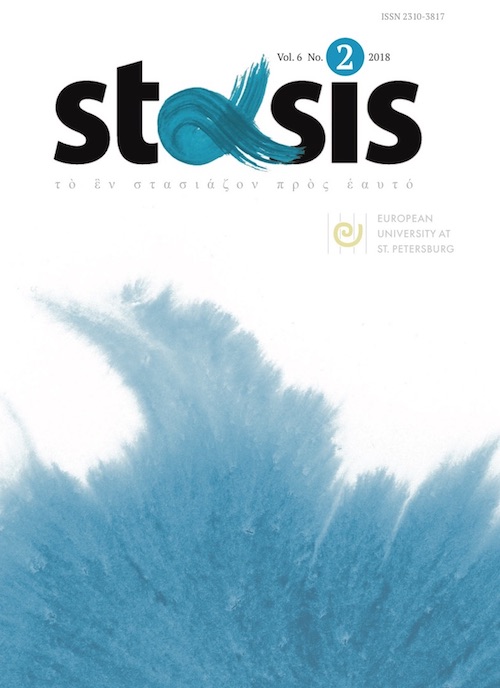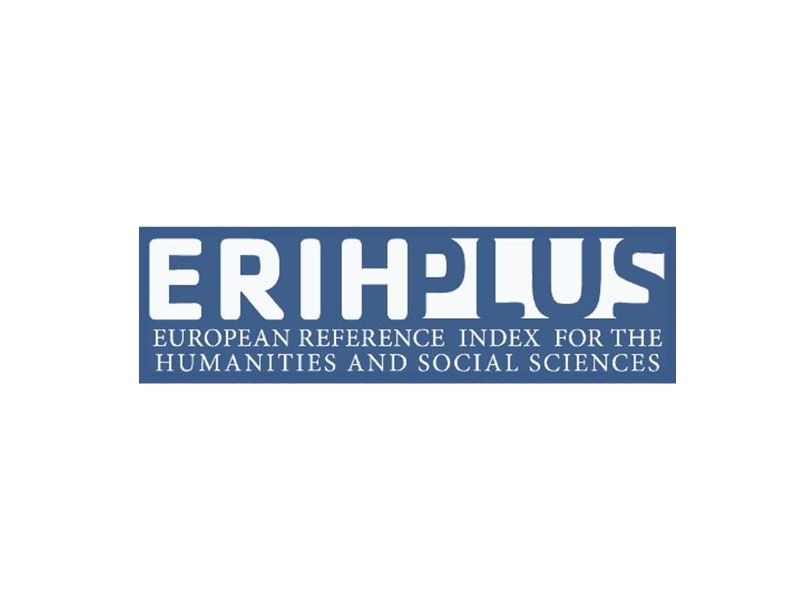Освещенные мраком. Символизм и негативность
Аннотация
Статья посвящена проблеме негативности в искусстве символизма, который я понимаю здесь как протомодернизм. Негативность связывает содержательную мрачность модернистского произведения и катастрофы, происходящие на уровне его формы. В этом смысле есть разница между шоковой эстетикой массовой культуры, абстракцией авангарда и идеологической фигуративной конструкцией негативности, которую дает символистское произведение. Статья предлагает своеобразную апологию символизма, прежде всего в пластических искусствах, и демонстрирует его непрекращающееся влияние.
Литература
Aurier, Gabriel-Albert (1891). “Le Symbolisme en Peinture: Paul Gauguin.” Mercure de France, 2.15: 155–65.
Badiou, Alain (2005). Handbook of Inaesthetics. Trans. Alberto Toscano. Stanford: Stanford University Press.
Badiou, Alain (2010). Five Lessons on Wagner. Trans. Susan Spitzer. London: Verso. Bely, Andrey (1978). Petersburg. Bloomington: Indiana University Press.
Benjamin, Walter (2006a). “The Work of Art in the Age of Its Technological Reproducibility: Third Version.” In Selected Writings, Vol. 4, 1938–1940, ed. Michael W. Jennings, Howard Eiland, 251–83. Cambridge, MA: Harvard University Press.
Benjamin, Walter (2006b). “Central Park.” In Selected Writings, Vol. 4, 1938–1940, ed. Michael W. Jennings, Howard Eiland, 161–99. Cambridge, MA: Harvard University Press.
Beumers, Birgit (ed.) (2013). Russia’s New Fin de Siècle. Contemporary Culture between Past and Present. Chicago: Intellect.
Blok, Alexander (2003). “A Puppet Show.” In Aleksandr Blok’s Trilogy of Lyric Dramas, ed. and trans. Timothy C. Westphalen, 19–33. New York: Routledge.
Brown, Clarence and Osip Mandelshtam (1965). “Mandelshtam’s Acmeist Manifesto.” The Russian Review 24.1: 46–51.
Bürger, Peter (1984). Theory of the Avant-Garde. Minneapolis: University of Minnesota Press.
Cavanaugh, Jan (2000). Out Looking In. Early Modern Polish Art, 1890–1918. Berkeley: University of California Press.
Chukovsky, Korney (1904). “Pshibyshevskii o simvole” [Pshibyshevskii on Symbol] Vesi [Libra] 11. http://www.chukfamily.ru/kornei/prosa/kritika/pshibyshevskij-o-sim-vole.
Clair, Jean (1983). Considérations sur les Beaux-Arts. Critique de la modernité. Paris: Gallimard.
Conio, Gérard (2003). L’art contre les masses: esthétiques et idéologies de la modernité. Lausanne : L’Age d’Homme.
Czekalski, Stanislav (2002). “Hermeneutyka Melancholii, czyli przypowiesc o powstaniu malowanych przeciw obrazowi.” [Hermeneutics of melancholy, or the parable about the creation of painting against the image] In Melancholia Jacka Malczews- kiego [Jacek Malczewski’s Melancholia], ed. P. Juszkiewicza, 81–102. Poznan: Wydawnictwo Poznanskiego Towarzystwa Przyjaciol Nauk.
Denis, Maurice (1920). Théories du symbolisme et de Gaugin vers un nouvel order clas- sique. Paris : L. Rouart et J. Watlin.
Denisoff, Dennis (2007). “Decadence and Aestheticism.” In Cambridge Companion to the Fin de Siècle, ed. Gail Marshall, 31–52. Cambridge: Cambridge University Press.
Eco, Umberto (2004). On Literature. Orlando: Harcourt.
Etzioni, Amitai (1970). Demonstration Democracy. New York: Gordon and Breach. Facos, Michelle, and Thor Mednick (eds.) (2015). The Symbolist Roots of Modern Art. London: Routledge.
Freud, Sigmund (1957). “On the History of the Psycho-Analytic Movement, Papers on Metapsychology and Other Works.” In Mourning and Melancholia. The Standard Edition of the Complete Psychological Works of Sigmund Freud, Volume XIV (1914– 1916), 237–58. London: Hogarth Press.
Goethe, Johann Wolfgang (1998). Maxims and Reflections. London: Penguin.
Gibson, Michael (1995). Symbolism. Köln: Taschen.
Heidegger, Martin (2000). Introduction to Metaphysics. Trans. Gregory Fried and Richard Polt. New Haven, CT: Yale University Press.
Heidegger, Martin (2001). Poetry. Language. Thought. Trans. Albert Hofstadter. New York: Harper & Row.
Heller, Reinhold (1985). “Concerning Symbolism and the Structure of Surface.” Art Jour- nal 45.2: 146–53.
Hirsh, Sharon (1985). “Symbolist Art and Literature.” Art Journal 45.2: 95–97.
Hegel, Georg W. F. (1975) Aesthetics. Lectures on Fine Art, Vol 1-2. Trans. T.M. Kox. Oxford: Clarendon Press.
Hegel, Georg W. F. (1983) Hegel and The Human Spirit. A Translation of the Iena Lectures on the Philosophy of Spirit (1805–06) Trans. L. Rauch. Detroit: Wayne State University Press.
Joyce, James (1986). Ulysses. New York: Vintage Books.
Jullian, Philippe (1971). Dreamers of Decadence. Symbolist Painters of the 1890s. New York: Praeger Publishers.
Lacan, Jacques (1949). “Le Stade du miroir comme formateur de la fonction du Je : telle qu'elle nous est révélée dans l'expérience psychanalytique.” Revue Française de Psychanalyse 13.4: 449–55.
Lifshitz, Mikhail (2009). Pochemu ia ne modernist [Why I am not a modernist]. Moscow: Iskusstvo–XXI vek.
Magun, Artemy (2011). Edinstvo i odinochestvo [Unity and solitude]. Moscow: Novoe Literaturnoe Obozrenie.
Mallarmé, Stéphane (1977). Prose et Vers. Paris: Garnier-Flammarion.
Man’kovskaia, Nadezhda B. (2012) “Esteticheskoe kredo frantsuzskogo simvolizma” [Aesthethic credo of French symbolism]. In Estetika: Vchera. Segodnia. Vsegda [Aesthetics: Yesterday. Today. Always] 5, 20–39. Moscow: IF RAN.
Mathieu, Pierre-Louis (1990). La génération symboliste. Geneva: Skira.
Minsky, Nikolai (1897). Pri svete sovesti: Mysli i mechty o tseli zhizni [In the light of conscience: Thoughts and dreams about the purpose of life]. St Petersburg.: Iu.N. Erlikh.
Moréas, Jean (1886). “Le symbolisme.” Le Figaro, le samedi 18, septembre 1886. Supplément littéraire: 1–2.
Perlmutter, Dawn (2000). “The Sacrificial Aesthetic: Blood Rituals from Art to Murder.” Anthropoetics 5. 2. http://anthropoetics.ucla.edu/ap0502/blood/
Pelevin, Viktor (1996). Chapaev i pustota [Chapaev and void]. Moscow: Vagrius.
Pelevin, Viktor (2016). S.N.U.F.F. Trans. Andrew Bromfield. London: Gollancz.
Pienkos, Andrzej (2002). “Widma w pracowni na przestrzeni wiekow.” [Spectres of the studio over the centuries] In Melancholia Jacka Malczewskiego [Jacek Malczewski’s Melancholia], ed. P. Juszkiewicza, 45–56. Poznan: Wydawnictwo Poznanskiego Towarzystwa Przyjaciol Nauk.
Rancière, Jacques (2004). The Politics of Aesthetics: The Distribution of the Sensible. London: Continuum.
Rosenblum, Robert (2000). “Art in 1900: Twilight or Dawn?” In 1900: Art at Crossroads, ed. Robert Rosenblum, Mary Anne Stevens, Ann Dumas, 26–53. London: Royal Academy of Arts.
Schelling, Friedrich W.J. (1989) The Philosophy of Art. Trans. D.W. Scott. Minneapolis: University of Minessota Press.
Schulte-Lasse, Jochen (1984). “Foreword: Theory of Modernism vs Theory of Avant-Garde.” In Theory of the Avant-Garde, ed. Peter Bürger, vii–xlvii. Minneapolis: University of Minnesota Press.
Thorsen, Niels (2013). Lars von Trier. Melancholia Genia. Trans. Yana Palekhova. Ripol Klassik.
Todorov, Tzvetan (1984). Theories of the Symbol. Ithaca, NY: Cornell University Press.







